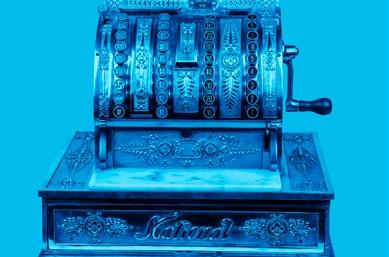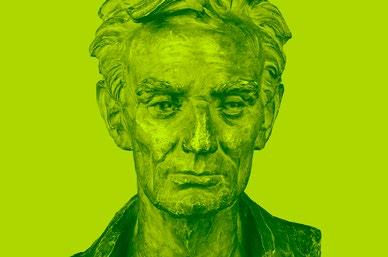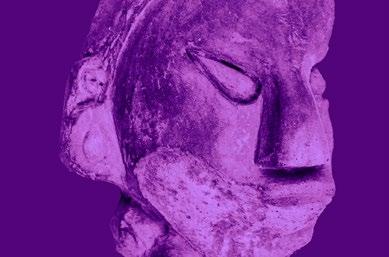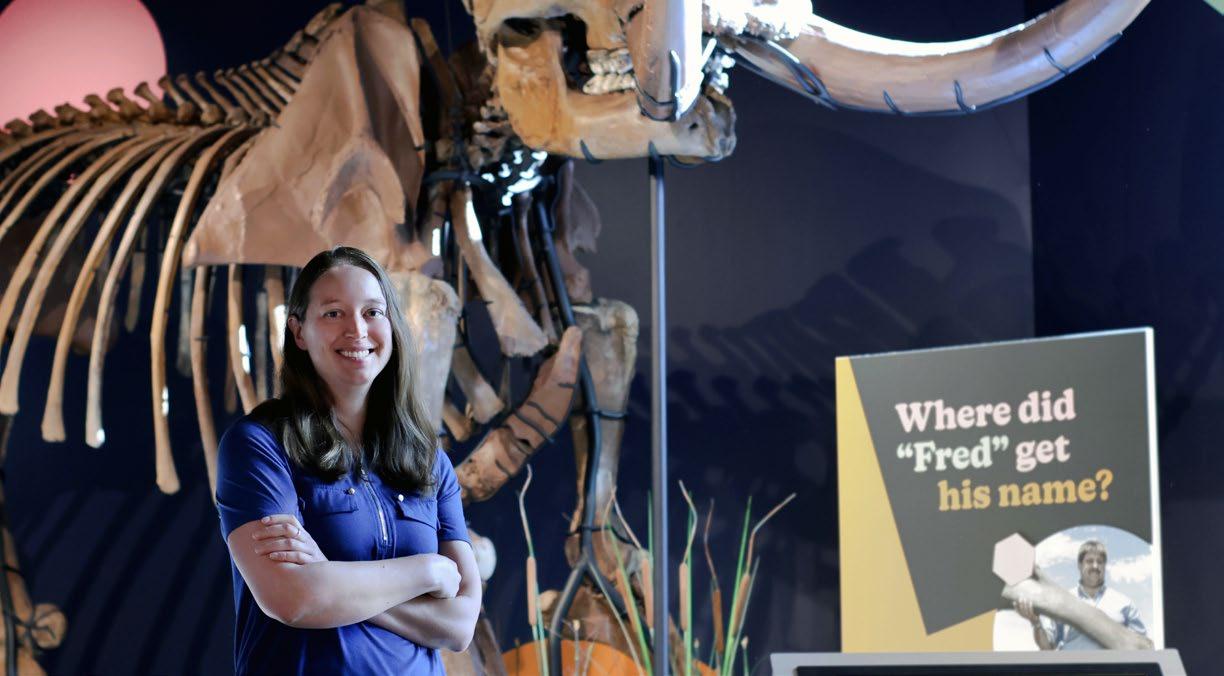Flags and Our Collection
Margaret Frentz, who was 13 when she started work and 22 when she finished. In the interim, Frentz also was granted a patent for an improved corset fastener.

As for the quilt, its center motif is an American flag with seven fuchsia stripes formed of dyed political ribbons, alternating with pieced stripes in a Broken Dishes pattern variation. The star field is formed of additional political ribbons dyed a pale blue, 36 white silk stars appliqued to the ribbons and edged in red chain stitch.
The ribbons were all dyed fuchsia using Perkins dye, one of the first synthetic dyes. Chemist William Henry Perkins invented the product when he was trying to discover a treatment for malaria, and fuchsia went on to become popular through the 1870s as a color for dresses.


Figueroa said that while Frentz’s quilt obviously takes some liberties with the design of an American flag – something that might anger purists – “maybe using political ribbons counteracts that a bit because she’s showing the people behind the country and the flag.”
A question regarding Flag Day (June 14) and what flags the museum owns led Curator of History Mary Figueroa to examine the collection. There, she found this striking, politically themed pieced quilt from the 1860s.
“It looks like a modern quilt,” she said. “The maker was ahead of her time and obviously very talented.”
Through the Mimsy system the museum uses to manage and catalog the collection, Figueroa discovered the quilt’s fascinating backstory. It was made in the 1860s and 1870s from silk and dyed political ribbons by a New Albany, Ind., teenager named

The political ribbons forming the stripes and the field represent Abe Lincoln, H[annibal] Hamlin, S[tephen] A. Douglas, John Bell, Ed[ward] Everett, and J[ohn] C. Breckinridge. They were all candidates for the presidential and vicepresidential elections in 1860. The entire blue star field is formed of Lincoln/Hamlin ribbons.
Below the flag is a gold silk rectangle with a smaller fuchsia silk rectangle appliqued over it, embroidered "1876," with a printed ribbon depicting Franklin Pierce and W.R. King outlined in cream chain stitch in the center. Directly below it is an entire ribbon listing O.H. Strattan for County Clerk, also dyed fuchsia.
“I do think, though, that it’s interesting to use this as an example for Flag Day,” she said, “because when we think about the flag, we think about Betsy Ross and the legend behind that flag and how women were so often the ones designing flags and making them. We think of the great men who started the country, but symbolically, women were charged with creating these artifacts that then go on to symbolize our country.”
Flag Day celebrates the adoption of the flag of the United States on June 14, 1777, by resolution of the Second Continental Congress. And while “there are other quilts in the collection that depict American flags,” Figueroa said, including one made after 9/11 from children’s T-shirts that were in the area of the Twin Towers, “this one seems a little bit more joyous.”
MAY 2023 CROSSROADS EMPLOYEE NEWSLETTER INDIANA STATE MUSEUM AND HISTORIC SITES
“It is important to understand the impacts of how ecosystem engineers change their environment and affect the resources and habitat of other species, as well as the effect of their extinction.”
What I’m
WORKING ON
I was lucky enough to travel to UC Berkeley the week of May 8 to participate in a meeting of the E6, or Ecological and Evolutionary Effects of Extinctions and Ecosystem Engineers. This is a working group funded by the National Science Foundation that brings together 30 researchers from disciplines across paleontology and ecology from the United States and Canada to study the effects of “ecosystem engineers” on natural environments.
Ecosystem engineers are animals, plants and microbes that have big impacts on their environment, which affects other organisms living around them. Examples include:
-The evolution of oxygen-producing microbes and plants.
-Reef building by marine species, which makes habitats for other marine life.
-Dam building by beavers, which creates wetland habitats that other species can live in. The effects of ecosystem engineers are wide ranging.
It is important to understand the impacts of how ecosystem engineers change their environment and affect the resources and habitat of other species, as well as the effect of their extinction. This will allow us to appreciate the ecosystems we have today. The meeting of the E6 working group served to bring together many researchers studying this question from different perspectives. The goal is to share data, research and early conclusions to work together to better understand the incredible diversity of ecosystem engineers and their role in their environment. In fact, a major ecosystem engineer before their extinction at the end of the last Ice Age was the American mastodon, which once roamed throughout Indiana.
Mastodons would have helped maintain and create habitat spaces locally and regionally simply through movement and foraging, much like elephants today. Their sheer size and large population would have meant they needed to eat hundreds of pounds of vegetation each day.
By Catalina Tomé Curator of Paleobiology

Trampling and tearing down foliage would have directly affected plant communities, protecting available niche space for other, smaller animals. Individuals and herds would have acted as seed and nutrient dispersers as they traveled long distances between resources.
The bones we have in our exhibits and collections help to highlight how different Indiana was when these enormous herbivores roamed more than 13,000 years ago. But also written in bone across the fossil record is just how important these giants were in shaping the landscape. And as we continue to study their remains, they continue to shape our understanding of the important role of ecosystem engineers.
SECURITY UPDATE With
Safety Quarter
Safety Quarter is here! From June 1 to Aug. 31 we will conduct safety drills, CPR classes and SafetySkills online trainings to help sharpen our minds to have a safer work environment. We will practice fire safety, inclement weather, active shooter and bomb threat awareness. Our safety quarter this year will also coincide with SafetySkills trainings.
Starting June 1, you will be able to log in to SafetySkills and begin taking your trainings for June. Alongside drills and courses, Friday, June 2, and Monday, June 5, at 11 a.m., we will conduct safety walkthroughs throughout the museum and admin side. If you need a refresher or are new to the building, we highly suggest you join a safety walkthrough. You should do this at least once a year. These 60-minute walkthroughs go over emergency exits, what to do in case of an emergency, and any other questions you may have regarding safety. Remember to wear comfortable shoes as we will walk a lot and take stairs. If you are interested in signing up for a walkthrough, please contact Dustin Chavez at dchavez@indianamuseum.org.

Tyriee and Dustin
CPR, AED and First Aid
CPR classes will begin in June. As we have done over the past couple of years, we will have online classes that range from three to six hours depending upon the pace you set for yourself. You do not have to do it all in one day. Dustin typically sends the links to sign up and complete your courses two weeks prior to the testing dates below.
Once completed, you will test with Dustin on the date you selected. It will take about two hours. If you are interested, please email Dustin with the date and time you would like to take the test. He will have two separate classes on the dates from 10 a.m. to noon and 2 to 4 p.m. You can email Dustin Chavez at dchavez@indianamuseum.org.
Thursday, June 22 – 4 seats available
Thursday, July 29 – 7 seats available
Thursday, August 24 - 7 seats available
 Security Manager Dustin Chavez
Director of Security
Security Manager Dustin Chavez
Director of Security
IMPORTANT NUMBERS TO PUT IN YOUR PHONE Security Non-Emergency 317.234.2454 Security Emergency 317.234.2455 After-Hours Security Mobile 317.509.5396
Tyriee Love
IN THE NEWS

Curator of History Mary Figueroa was quoted in a New York Times article about senior cords. (This is behind a paywall. If you’d like to read a copy, message Marc Allan at mallan@indianamuseum.org.)
ISMHS’s acquisition of Katie Pourcho’s White House dress merited a nice story from WISH-TV

The museum was mentioned in this Bloomington Herald-Times article about artifacts unearthed at Spring Mill State Park that soon will be part of our collection. The Indianapolis Recorder looked at our partner Asante Art Institute and its production “Str8 Up Frederick Douglass.”
“Vintage Vision: Cars of the 1920s” got a nice mention in the Indianapolis Star.
INDIANA STATE MUSEUM AND HISTORIC SITES
Click on the blue names below to see the news.
Katie Pourcho models her designer original, which is now part of the ISMHS collection.
How long have you worked for ISMHS?
A little over 6 years. What’s your title and how do you explain your job to someone outside ISMHS?
As the chief officer of engagement, I work on exhibit and education projects for the museum and I sit on the leadership team.
Tell me about your family. Wife Kerry and my stepson Francis, who is a cat.
When is your birthday?
I’m a Leo. But not like a majestic lion one, like a housecat one.
If you could travel anywhere in the world, where would you go and why?
One day I’m hoping to get back to Japan. I didn’t get to visit Tokyo Disneyland the first time or Osaka’s Tower of the Sun. Really anything that happens in Japan is amazing.
Do you come from a small or big family? How big or small?
A small family, just one sibling. I can’t imagine it any other way. I just can’t imagine fighting more than one sibling for Nintendo time.
What’s your favorite song?
Oh, thanks for asking. I made you a mixtape: Click here to listen.
How do you spend your free time?
I play so many video games. Too many? Only time will tell. If you see me, ask about my favorite Pokémon.
STAFF SPOTLIGHT: BRIAN MANCUSO
Brian oversees the Experience and Engagement Departments. These teams design and implement permanent collection installations related to art, history and natural science including redesign of the core galleries, temporary exhibitions at the museum and historic sites, and traveling experiences.

Are you a morning or a night person?
I am a creature of the night, 2 a.m. is my natural bedtime. One day society will recognize all the night dwellers and adjust accordingly.
What is your favorite movie or TV show?
Can you have a favorite any more in this glut of streaming? It’s always whatever is next or new. That said, Pacific Rim is a cinematic masterpiece. Also, my taste is trash.
What’s your favorite quote or song lyric?
Antonio Carlos Jobim’s Águas De Março in any language is always a delightful listen.
Who was your best teacher in school and why?
I had two. A great high school chem teacher named Wayne Newton and my ag teacher Gail Chesnut. Both loved teaching and their students. Plus, both helped me get out of detention. It was my sentence for skipping multiple Pep Rallies (’cause school spirit is LAME).
Who is your celebrity crush?
Does the phone from Her count? No? Never mind them.
Do you speak more than one language?
No. I’ve always admired people who can speak or at least function in more than one language. It’s magical wizardry that will forever remain outside my grasp.
What is your biggest pet peeve?
Anyone who knows me, knows that I am just a bunch of peeves woven into a “personality.”
What is your favorite holiday and why?
March 10. It’s really the only holiday that Italian-Americans should celebrate. That and whatever Pokémon Day falls on. Usually it’s late February, so both of those make a nice holy season for me.
Where did you grow up?
I grew up in Tampa. It's fine to visit but I never want to live in Florida again. The weather is bad and there’s always a gator nearby.
What is a skill that you would like to learn?
I’m actively trying to learn to skateboard but being realistic about it. The sadness in the eyes of the skatepark teens fuels me.
What do you value most in a friend or partner?
Can they make and drink a gin martini? With vermouth and olives in it? OK, that’s a start.
What is your biggest fear –rational or irrational?
I don’t want to put it out there in the world really, but let’s just say that three-ring binders should be approached with caution. Plus $ipd3rs (masked so the Algorithm doesn’t start to serve me “them” on Instagram).
Best piece of advice you’ve ever gotten or given?
“You gotta know when to hold ’em, know when to fold ’em, know when to walk away and know when to run.” Wait, this sounds like terrible advice. Unless this was his chicken recipe. Now I’m listening.
JUNE ANNIVERSARIES
DANNY ROBERTS
Facilities Manager – 34 Years
TRACI CROMWELL
Director of Collections – 22 Years
PEGGY FISHERKELLER
Curator of Geology – 22 years
DAMON LOWE
Senior Curator of Science and Technology and Curator of Biology – 22 years
ELIZABETH SCOTT
Natural History & Archaeology Preparator – 22 Years
JOANNA HAHN
Central Regional Director – 20 Years
CARRIE MILLER
Membership Manager – 17 Years
CRYSTAL NECESSARY
Accounts Receivable Accountant – 17 Years
MEREDITH MCGOVERN
Arts & Culture Collections Manager – 16 Years
DAVID WEAVER
Site Manager – 16 Years
NEW TEAM MEMBERS
ANNIE BRETZ
Summer Camp Counselor
JASON HOUSLEY
Engagement Specialist
HEATHER KILBURN
Summer Camp Counselor
CARA OSER
Summer Camp Counselor
MADELYNNE RUNYON
Summer Camp Counselor
GWEN JOHNSON
Dockmaster – 11 Years
NICOLE RIFE
Director of Education Engagement – 5 Years
HAYLEY WILSON
Director of Interpretation – 5 Years
BRAD BAUTE
Exhibit Fabricator and Carpenter – 2 Years
SHANNON CONWAY
Interpreter – 2 Years
MARK JOHNSON
Maintenance Tech – 2 Years
JORDAN HILLMAN
Gallery Engagement Specialist – 1 Year
GREG ROSHEL
Interpreter – 1 Year
KEVIN WHALEY
Registrar – 1 Year
Dates to remember
Open through June 25 at ISM
Inspired by the Dunes: Paintings by Frank V. Dudley
Open through Oct. 15 at ISM
Vintage Vision: Cars of the 1920s
Open through Oct. 29 at ISM
Influencing Lincoln
June 7, 14, 21 and 28
Canal Nights at ISM
June 17
Juneteenth. Admission free at all locations
June 18
Fathers Day
Visit indianamuseum.org/calendar for a complete list of ISMHS programs and events!
Julie Schaefer, VP, Marketing & Communication | 317.617.9151 | Jschaefer1@indianamuseum.org








SHARE YOUR STORY IDEAS!
(Top left) Cathy presented the Sagamore of the Wabash to Eiteljorg Museum of American Indians and Western Art retiring president and CEO John Vanausdall on behalf of Gov. Eric Holcomb earlier this month. New Whitewater Canal Site Manager Joey Smith met with the Metamora community on May 23. Special thanks to Mick Wilz and Third Place for bringing the pizza oven!







 Security Manager Dustin Chavez
Director of Security
Security Manager Dustin Chavez
Director of Security










